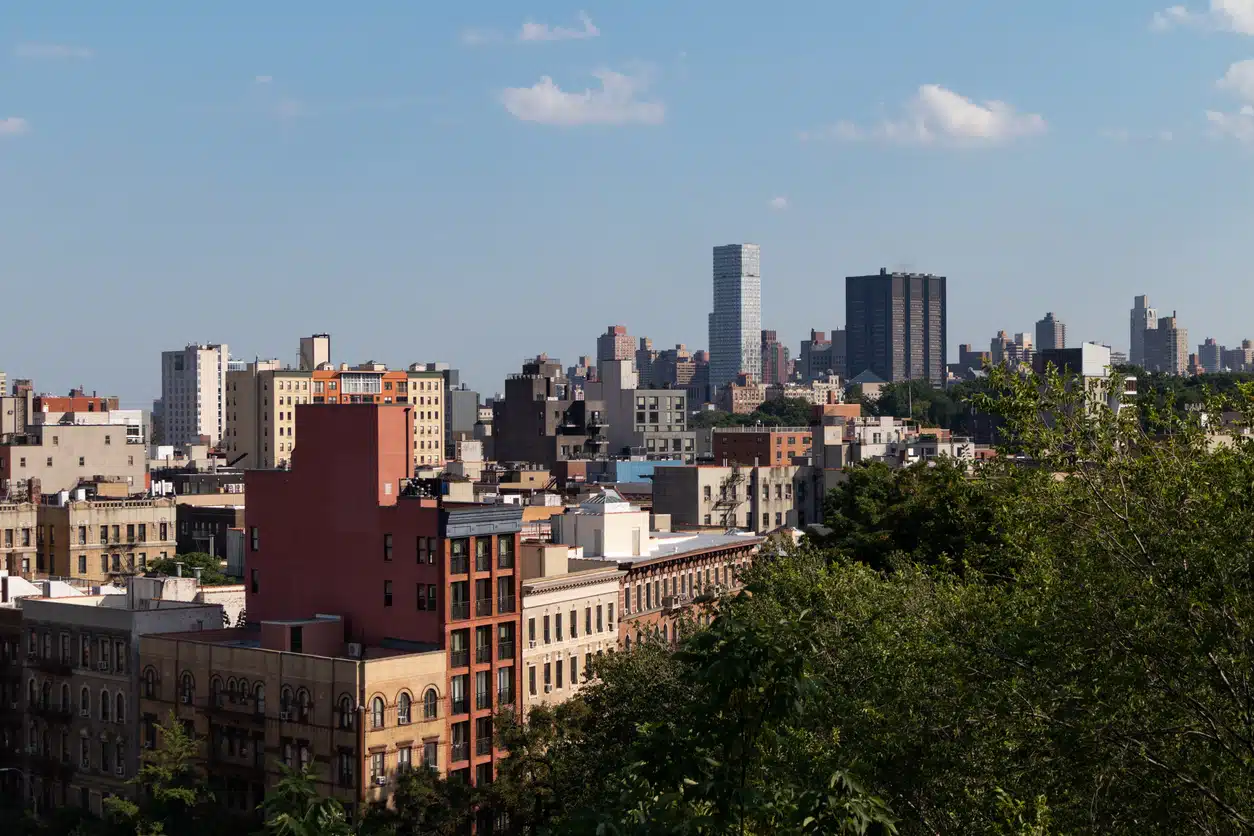Harlem is one of the few parts of New York City that manages to hold on to such a distinct identity while still constantly evolving.
The area is often described as one neighborhood, but Harlem is really made up of three distinct parts. East Harlem, Central Harlem, and West Harlem each have their own streetscapes, cultures, and communities. Together, they form a collection of Harlem neighborhoods with something for almost anyone. You’ll find stately brownstones near bustling commercial strips, modern apartments next to century-old churches, and block parties that still feel like a cornerstone of city life.
For anyone thinking about moving to New York, Harlem offers a mix of old and new that is hard to match. What are the best neighborhoods in Harlem? That depends on what you value most. Each reflects a piece of Harlem’s rich history and identity. Keep reading to learn more about Harlem and find out which neighborhood is the best fit for you.
Harlem’s Rich History
Harlem was settled by Dutch immigrants in the 17th century, and takes its name from the Dutch city of Haarlem. By the early 20th century, it became a destination for African Americans moving north during the Great Migration.
The result was the Harlem Renaissance, a cultural movement in the 1920s and 1930s that reshaped American music, art, literature, and politics. Writers like Langston Hughes and Zora Neale Hurston pioneered new ideas in literature, while jazz legends like Ella Fitzgerald and Duke Ellington played the Apollo Theater to adoring crowds. Later, writers, painters, and political leaders like Malcolm X influenced American art and debate from its brownstone-lined streets.
Getting ready for a big move? Utilize these moving apps to make it easier. |
Harlem Neighborhoods Guide
Harlem’s housing market is as varied as its streets. The median home sale price sits around $930,000, and average one-bedroom rent is about $3,315. Prices shift by location. Central Harlem’s landmarked brownstones often list higher. East Harlem still has more affordable pockets. West Harlem’s river views and university access keep demand strong.
How many neighborhoods are in Harlem? The area is typically divided into three sections: West Harlem, Central Harlem, and East Harlem. Within them are distinct sub-neighborhoods.
West Harlem
West Harlem blends history, education, and green space in one of Manhattan’s most dynamic areas. Its neighborhoods stretch from the Hudson River to Morningside Park and offer views, walkability, and a mix of residents that includes students, professors, artists, and long-time locals.
1. Hamilton Heights: Best for history buffs
Median home sale price: $537,432
Average rent: $1,933
Closest subway station: 145th Street (A, B, C, D); express trains to Midtown in about 15 minutes.
Don’t miss: Alexander Hamilton’s Grange National Memorial, Riverbank State Park, The Chipped Cup café.
Hamilton Heights is a showcase of late 19th-century architecture, from limestone and brownstone townhouses to ornate apartment buildings. The neighborhood sits between the Hudson River and Amsterdam Avenue, offering tree-lined streets with a quiet, residential feel. Many blocks are landmarked, protecting their historic character.
Its cultural history runs deep. Alexander Hamilton’s relocated home is in St. Nicholas Park, and the area played a role in Harlem’s jazz and art scenes. The community remains diverse, with a mix of long-time residents, young professionals, and families. Proximity to the river, parks, and express subway service makes it a practical choice for those who value both history and convenience.
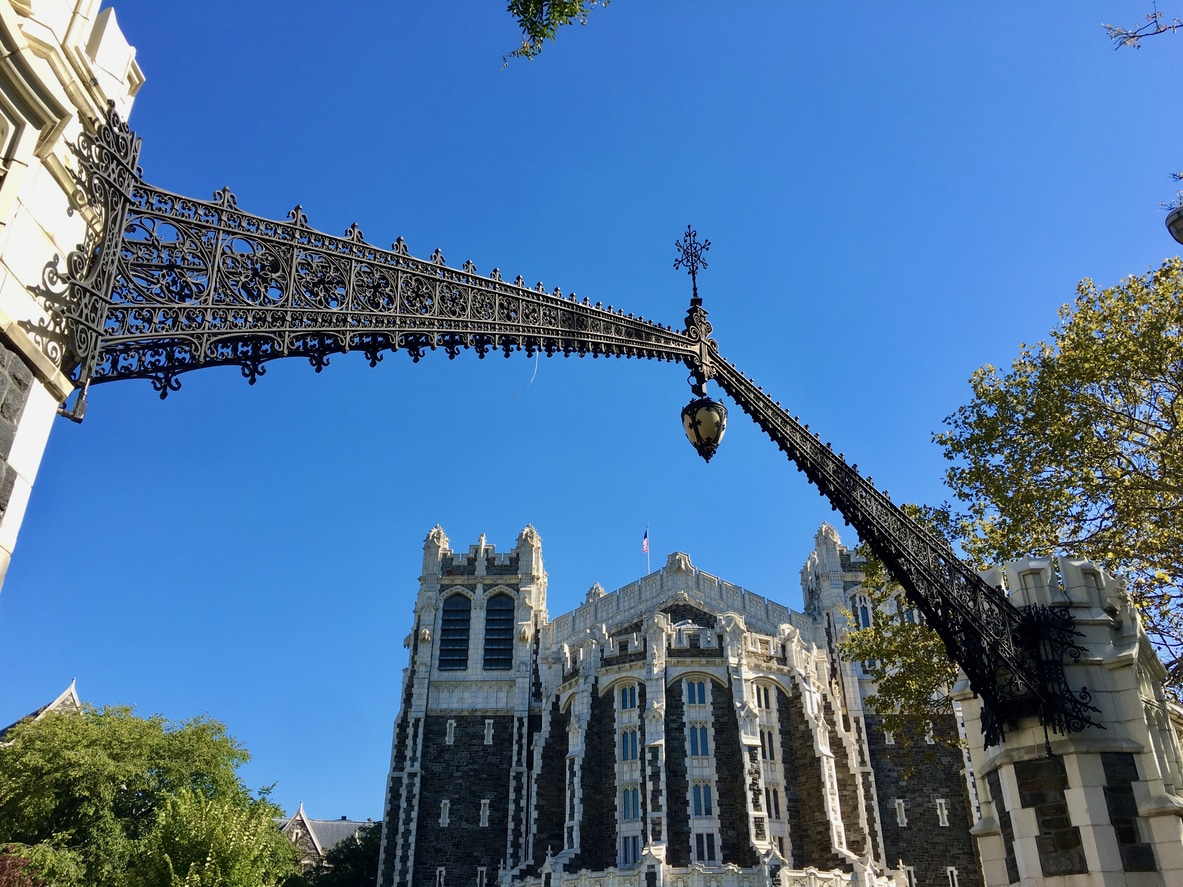
2. Manhattanville: Best for academics
Median home sale price: $599,000
Average rent: $2,450
Closest subway station: 125th Street (1), 137th Street–City College (1). The 1 train connects directly to the Upper West Side and Midtown.
Don’t miss: City College of New York, Fairway Market, The Cotton Club.
Manhattanville has been transformed over the past two decades, largely as a result of Columbia University’s campus expansion. Modern academic buildings now stand alongside older warehouses and pre-war apartment blocks. The area has an urban, industrial edge, with wide avenues and an active street life.
Students and faculty from nearby institutions give Manhattanville an intellectual energy. Cafés, markets, and affordable eateries cater to a mix of budgets, and the Hudson River Greenway offers a scenic outlet just a few blocks west.
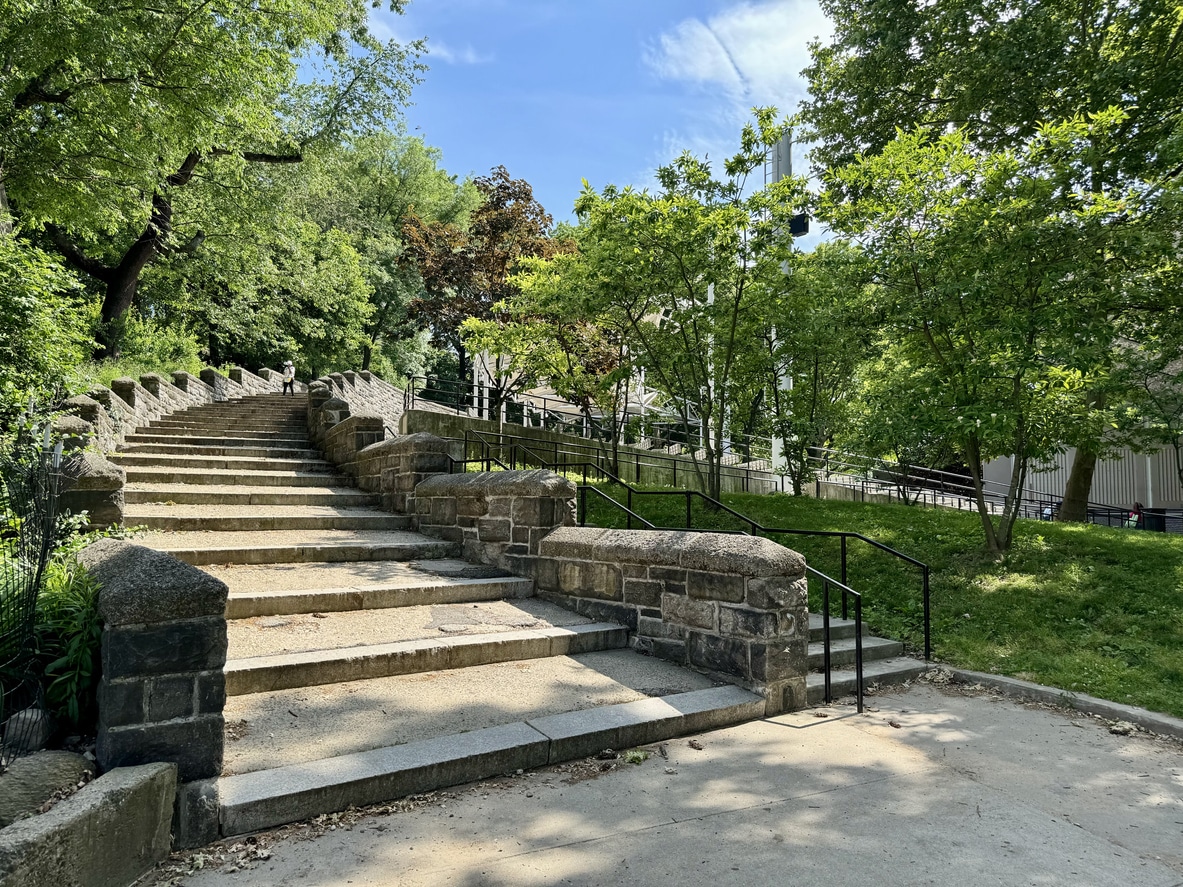
3. Morningside Heights: Best for academic and cultural institutions
Median home sale price: $832,500
Average rent: $3,754
Closest subway station: 116th Street–Columbia University (1); direct service to the Upper West Side and Midtown.
Don’t miss: Columbia University, Cathedral of St. John the Divine, Morningside Park.
Morningside Heights is anchored by Columbia University and some of Manhattan’s most notable institutions. The neighborhood is defined by its Gothic Revival architecture, academic quads, and cultural landmarks. It sits on a bluff above Morningside Park, which offers plenty of green space and city views.
The streets are especially busy during the academic year, of course, with students, faculty, and visitors filling local cafés and bookstores. Cultural offerings range from world-class concerts to community events hosted by the cathedral and university. Its location, just north of the Upper West Side, means residents can enjoy both a campus-like environment and quick subway access to the rest of Manhattan.
4. Sugar Hill, Manhattan: Best for Harlem Renaissance legacy
Median home sale price: $600,000
Average rent: $1,732
Closest subway station: 145th Street (A, B, C, D); express service to Midtown in about 15 minutes.
Don’t miss: Sugar Hill Children’s Museum of Art & Storytelling, St. Nicholas Park, The Edge Harlem restaurant.
Sugar Hill earned its name in the 1920s, when the Harlem Renaissance was at its peak, and living there meant “life was sweet.” Its blocks are lined with elegant rowhouses, pre-war apartment buildings, and landmarks that once housed jazz legends, artists, and civil rights leaders. Many of these buildings remain intact, giving the area an unmistakable historic character.
Today, Sugar Hill retains its cultural significance while offering a close-knit, residential atmosphere. Parks and museums are steps away, and the neighborhood’s elevated perch provides sweeping views over lower Harlem and beyond.
Central Harlem
Central Harlem is the heart of Harlem’s cultural identity. It’s where the Harlem Renaissance found its voice, and where music, art, and activism continue to thrive. The neighborhood stretches roughly from 110th to 155th Street between Fifth and St. Nicholas Avenues.
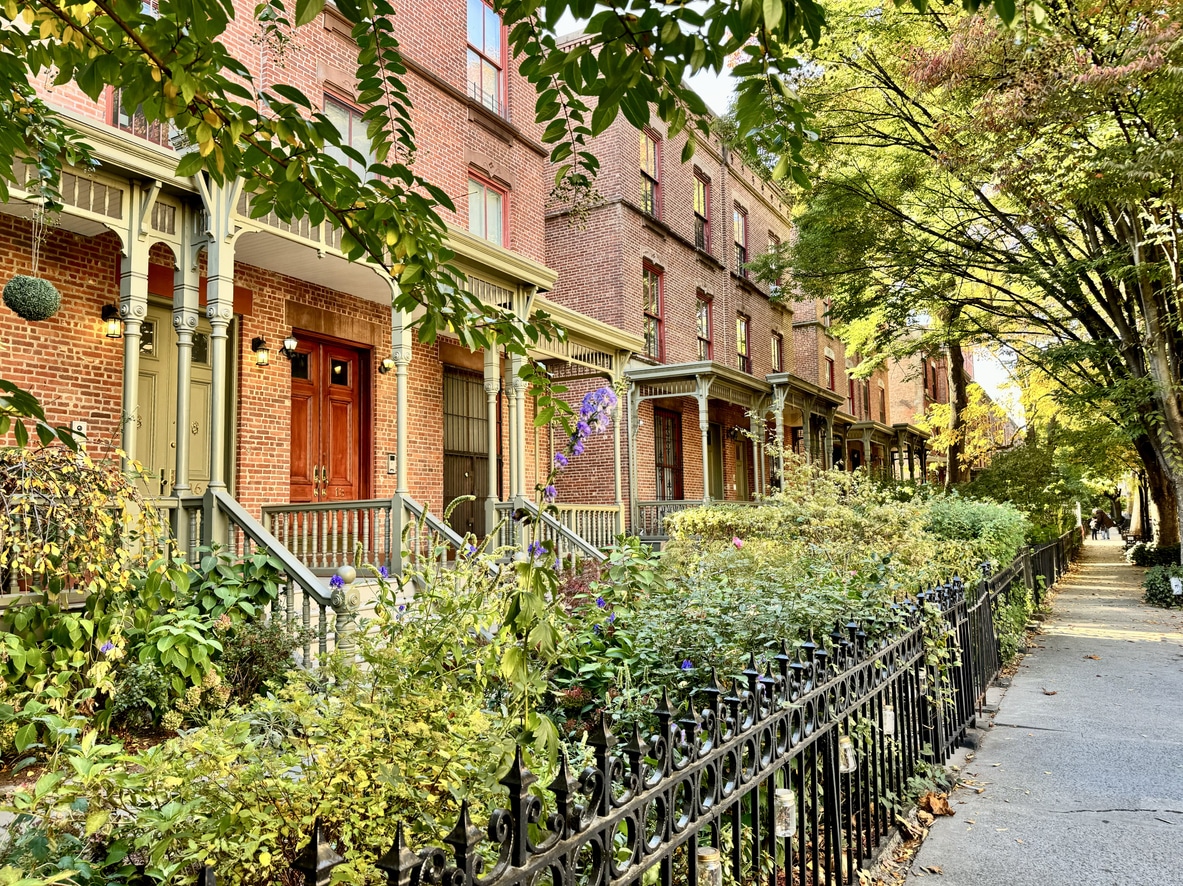
5. Astor Row: Best for historic architecture
Median home sale price: $841,500
Average rent: $3,000
Closest subway station: 125th Street (2, 3); express service to Midtown in under 15 minutes.
Don’t miss: Astor Row Houses, Marcus Garvey Park, Red Rooster Harlem.
Astor Row is one of Harlem’s most distinctive residential blocks. Built between 1880 and 1883, its Victorian-style rowhouses stand out for their front yards and wooden porches, which are features rarely seen in Manhattan. The street is landmarked to preserve its unique architecture for future generations.
Living here means you’re walking distance to Marcus Garvey Park, popular dining, and express subway service. The atmosphere is residential and quiet compared to the busier avenues nearby. This is a rare find and gem in the city.
6. Strivers’ Row: Best for jazz and Black heritage
Median home sale price: $1,300,000
Average rent: $3,450
Closest subway station: 135th Street (B, C); easy connection to Midtown and downtown.
Don’t miss: The Schomburg Center for Research in Black Culture, Bill’s Place, St. Nicholas Park.
Strivers’ Row is a historic district of late 19th-century rowhouses known for its ties to Harlem’s Black middle class and cultural elite. Jazz musicians, artists, and political figures have called these blocks home, and the architecture remains some of the most beautiful in the area.
The neighborhood sits near major cultural landmarks like the Schomburg Center and intimate jazz venues such as Bill’s Place. Residents enjoy a walkable, community-focused environment with a deep sense of history.
7. Le Petit Senegal: Best for Pan‑African culture
Median home sale price: $1 million
Average rent: $3,450
Closest subway station: 116th Street (B, C); quick ride to Midtown.
Don’t miss: Sene Grill, Patisserie Les Ambassades, Malcolm SHabazz Harlem Market.
Le Petit Senegal is a vibrant cultural enclave centered on 116th Street between Frederick Douglass Boulevard and Lenox Avenue. The neighborhood is known for its West African restaurants, bakeries, and markets, creating a strong sense of community and connection to the continent.
The streets are filled with the aroma of traditional dishes, French-language signs, and small shops selling everything from textiles to fresh produce. Living here offers immersion in a global culture while keeping all the conveniences of Central Harlem within reach.
Pro Tip: While prepping to move, take advantage of our comprehensive moving checklist. |
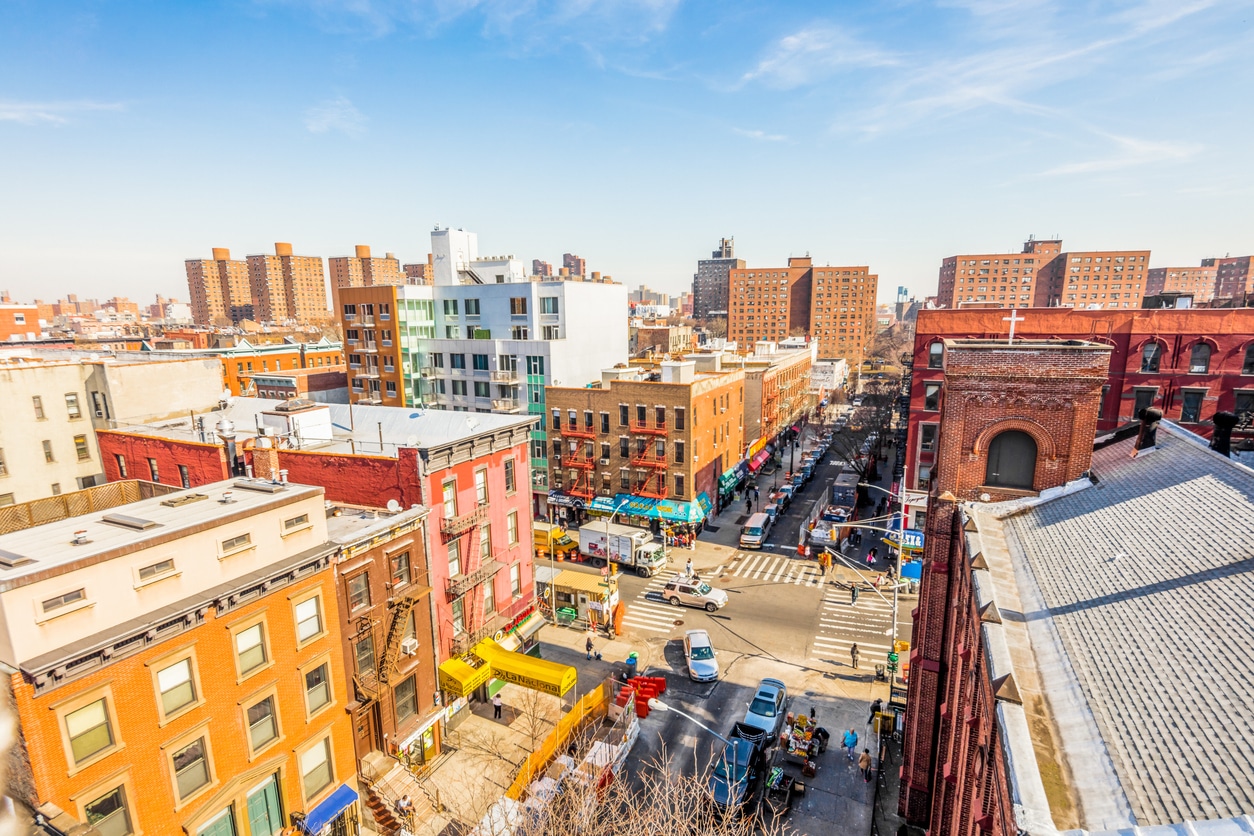
East Harlem
East Harlem, also known as El Barrio, is a center of Latino culture in New York City. Located north of the Upper East Side and east of Central Park, the neighborhood is known for its murals, music, and strong community ties.
8. Spanish Harlem (El Barrio): Best for Latin culture
Median home sale price: $737,500
Average rent: $3,33
Closest subway station: 116th Street (6); direct service down the east side of Manhattan.
Don’t miss: El Museo del Barrio, La Marqueta
Spanish Harlem is a neighborhood where culture is visible on every block. Murals of Latin music icons and political leaders add color to brick walls. Salsa and bachata drift from open windows. Local businesses, many family-owned, serve traditional dishes that have been staples for generations.
Housing options include pre-war apartment buildings, brownstones, and newer condos. The neighborhood’s location offers quick access to Midtown via the 6 train, while East River Plaza provides large-scale shopping. Festivals and parades throughout the year keep public spaces active.
Considering a Move to Harlem?
Harlem has something for everyone. Hamilton Heights offers history. Spanish Harlem brings unmatched culture. Morningside Heights delivers world-class institutions.
Long-distance moving takes planning and precision, however. Colonial Van Lines has more than 50 years of experience. Our experienced cross-country movers pack, load, transport, and unload with care. Your belongings arrive safely. Your move feels less stressful.
Pick your spot, and when you’re ready, we’re ready. With over 50 years of experience in long-distance moving, Colonial Van Lines will get you there. Start now with a free quote.

